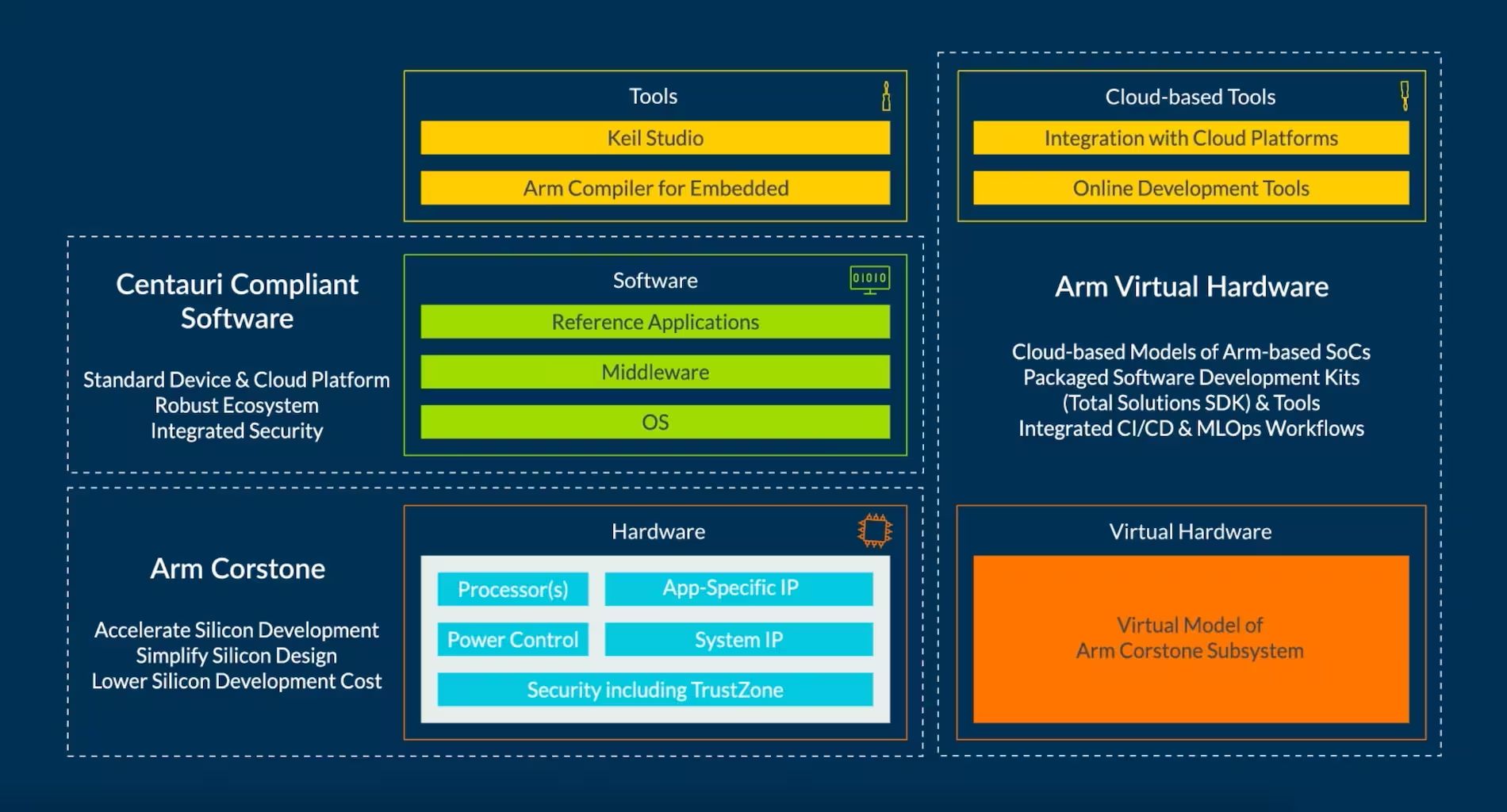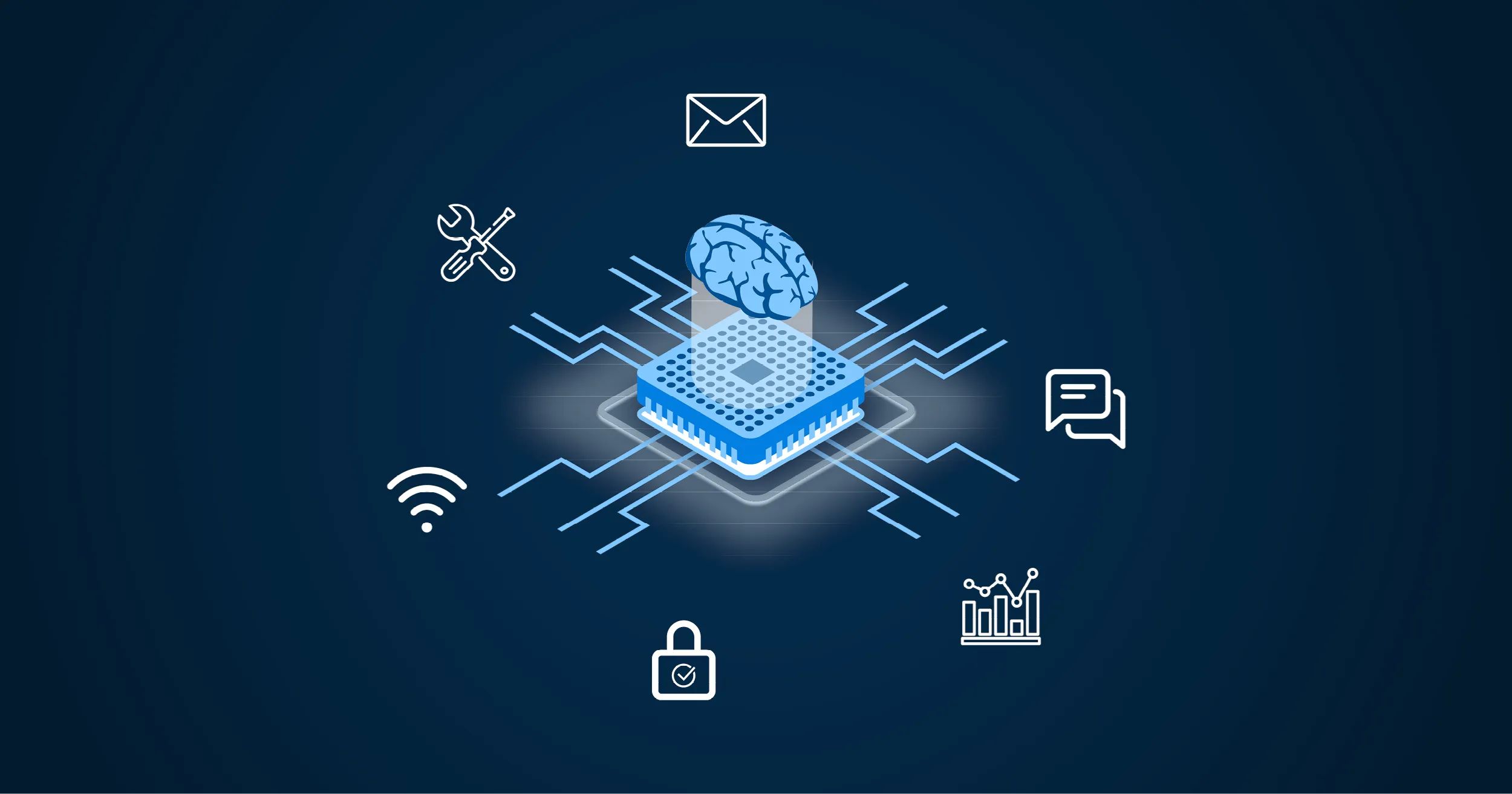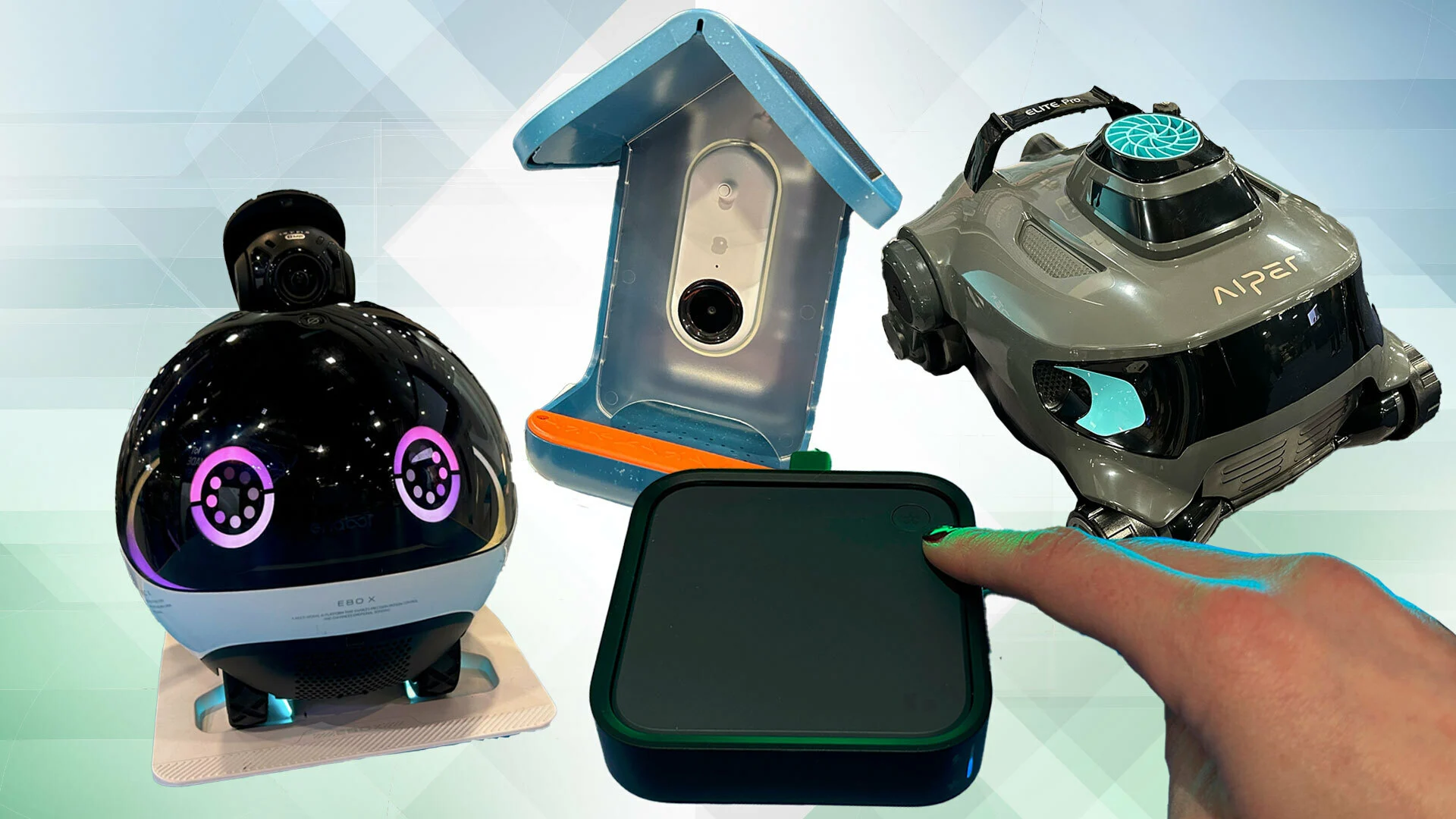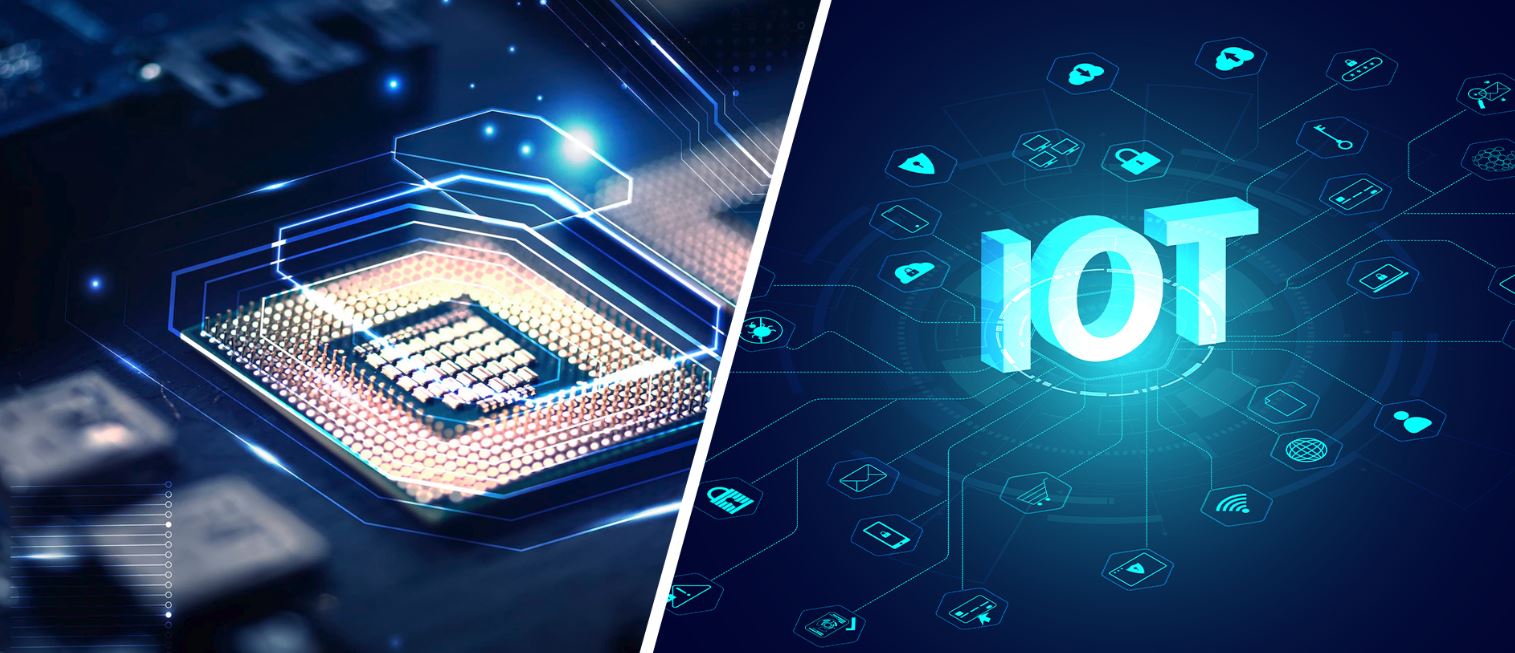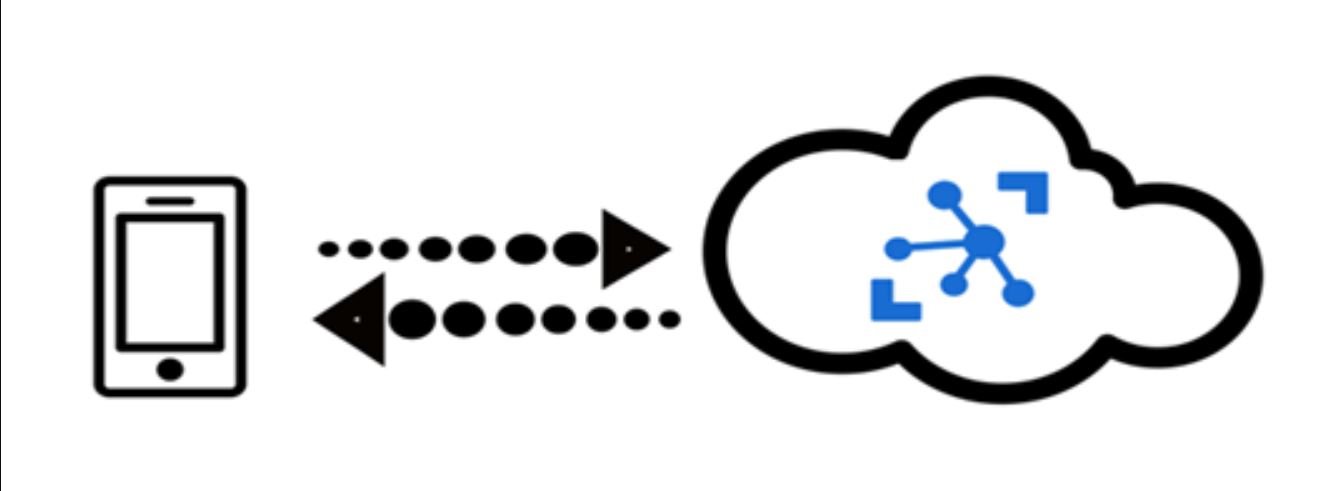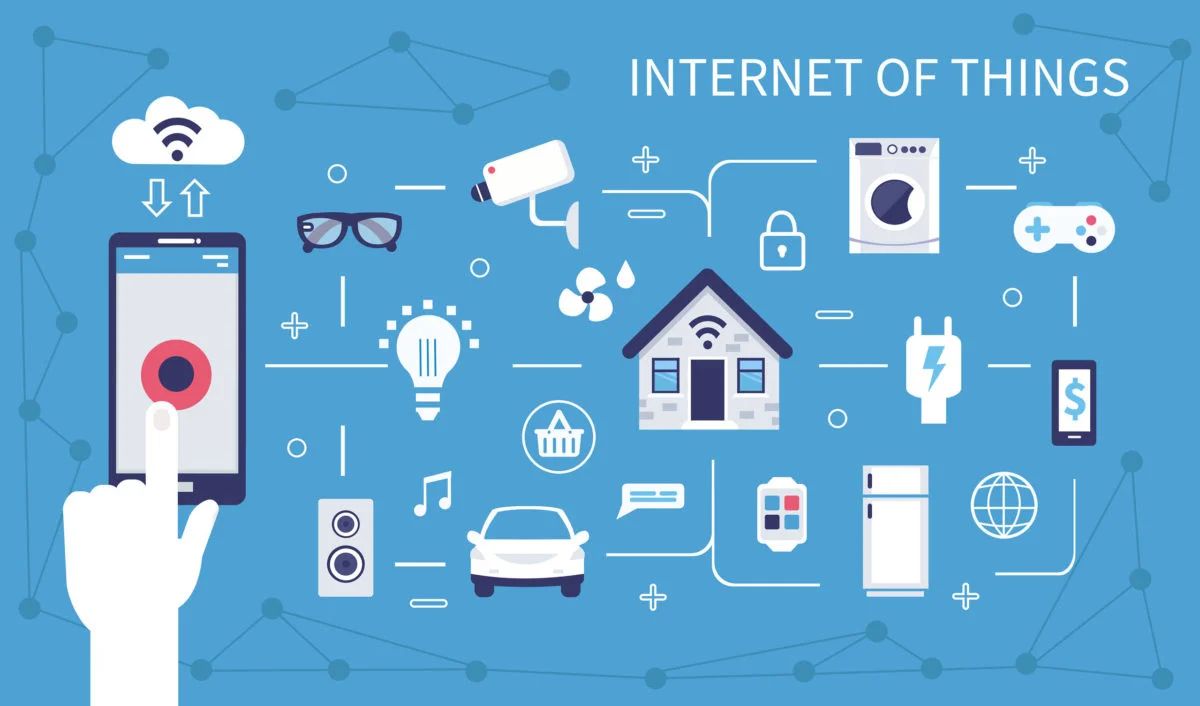Introduction
Welcome to the world of IoT home automation, where technology meets convenience and efficiency. With the rise of Internet of Things (IoT), our homes are undergoing a transformation by becoming smarter and more connected than ever before. From controlling the lights with a simple voice command to monitoring the security of our homes from miles away, IoT home automation is revolutionizing the way we live and interact with our living spaces.
IoT home automation refers to the integration of smart devices, sensors, and actuators to enable control, management, and automation of various aspects of a home. This includes controlling temperature, lighting, security systems, entertainment systems, and even household appliances. The main idea behind IoT home automation is to create a connected ecosystem of devices that can work together seamlessly to enhance comfort, convenience, and energy efficiency.
Imagine coming home after a long day, and as you approach your front door, it automatically unlocks and welcomes you with your favorite lighting setting and soothing music playing in the background. Your smart thermostat adjusts the temperature to your preferred level, and the curtains are already drawn to create a cozy ambiance. And that’s just the beginning.
With IoT home automation, you can control your entire home with a simple voice command or a few taps on your smartphone. You can turn off the lights in the living room without getting up from the couch, check who’s at the door from your office, or even feed your pet remotely. The possibilities are endless, and the convenience it offers is truly remarkable.
But how does IoT home automation actually work? What are the key components that make it possible? What are the benefits and challenges associated with it? In this article, we will explore the fascinating world of IoT home automation and delve into its intricacies. So, let’s dive in and discover the wonders of this smart technology that is shaping the future of our homes.
What is IoT Home Automation?
IoT home automation is a concept that involves the integration of smart devices, sensors, and actuators to enable control, management, and automation of various aspects of a home. It is a system that connects devices in the home to a central hub or a network, allowing users to control and monitor their home remotely using their smartphones, tablets, or voice commands.
At the heart of IoT home automation is the idea of creating a connected ecosystem where devices can communicate with each other, gather and analyze data, and respond intelligently to user preferences. This connectivity and intelligence enable homeowners to have a seamless and personalized experience in managing their homes.
One of the key components of IoT home automation is the use of smart home devices. These devices can be anything from smart speakers, thermostats, lighting systems, security cameras, door locks, appliances, and more. These devices are equipped with sensors and are connected to the internet, allowing them to send and receive data, as well as be controlled remotely.
Another important aspect of IoT home automation is the use of communication protocols. These protocols determine how the devices in the home communicate with each other and with the central hub or network. Some of the commonly used communication protocols include Wi-Fi, Bluetooth, Zigbee, Z-Wave, and NFC (Near Field Communication).
Sensors and actuators play a crucial role in IoT home automation. Sensors gather information about the environment, such as temperature, motion, light, and occupancy. Actuators, on the other hand, are responsible for taking actions based on the data received from the sensors. For example, a sensor may detect that nobody is present in a room and trigger the actuator to turn off the lights to save energy.
Internet connection and cloud services are also integral components of IoT home automation. The devices in the home need to be connected to the internet to enable remote access and control. Cloud services play a vital role in managing and storing the data generated by the devices, as well as providing additional functionality and integration with other smart home services and applications.
The control and automation aspect of IoT home automation can be achieved through various means. Users can control their smart home devices through smartphone apps, voice assistants like Amazon Alexa or Google Assistant, or even through physical control panels. Automation, on the other hand, involves setting up rules and triggers that allow devices to perform certain actions automatically. For example, you can set a rule to turn off all the lights and lower the thermostat when you leave the house.
In the next sections, we will delve deeper into the components and technologies that make IoT home automation possible, as well as explore the benefits and challenges associated with it. So, stay tuned to discover the exciting world of IoT home automation.
Components of IoT Home Automation
IoT home automation involves several key components that work together to create a smart and interconnected living space. These components enable the control, management, and automation of various aspects of a home, providing homeowners with convenience, energy efficiency, and enhanced security. Let’s take a closer look at the components that make IoT home automation possible.
Smart Home Devices: Smart home devices are at the core of IoT home automation. These devices include smart speakers, thermostats, lighting systems, security cameras, door locks, appliances, and more. These devices are equipped with sensors, connectivity capabilities, and often have built-in intelligence to facilitate seamless communication and control.
Communication Protocols: To enable communication among the devices in a smart home, various communication protocols are used. These protocols determine how the devices connect and communicate with each other and with the central hub or network. Some of the commonly used protocols include Wi-Fi, Bluetooth, Zigbee, Z-Wave, and NFC (Near Field Communication).
Sensors and Actuators: Sensors play a crucial role in IoT home automation by collecting data about the environment and the occupants of the home. These sensors can detect temperature, motion, light, humidity, and more. Actuators, on the other hand, are responsible for taking action based on the data received from the sensors. For example, a motion sensor might trigger the lights to turn on when it detects movement in a room.
Internet Connection and Cloud Services: To enable remote access and control, the devices in a smart home need to be connected to the internet. This allows homeowners to manage their homes from anywhere using their smartphones or other connected devices. Cloud services play a vital role in managing and storing the data generated by the devices, as well as providing additional functionality and integration with other smart home services and applications.
Control and Automation: The control aspect of IoT home automation can be achieved through various means. Smartphone apps, voice assistants, or physical control panels allow users to control and manage their smart home devices. Automation, on the other hand, involves setting up rules and triggers that enable devices to perform certain actions automatically. For example, you can set a rule to turn off all the lights and lock the doors when you leave the house.
Data Analytics and Machine Learning: The data generated by the sensors and devices in a smart home can be analyzed to gain insights and provide personalized experiences. Machine learning algorithms can be used to learn from user preferences and behavior patterns to automate certain actions or make intelligent recommendations. For example, the smart thermostat can learn your temperature preferences and automatically adjust accordingly.
By leveraging these components and technologies, IoT home automation enhances comfort, convenience, and energy efficiency. In the following sections, we will explore the specific devices and technologies that contribute to the seamless functioning of a smart home. So, let’s move on to discover the exciting world of smart home devices and their capabilities.
Smart Home Devices
Smart home devices are at the forefront of IoT home automation, bringing convenience, efficiency, and connectivity to our living spaces. These devices are equipped with advanced technologies, sensors, and connectivity capabilities, allowing users to control and monitor various aspects of their homes remotely. Let’s explore some of the most common smart home devices and their functionalities.
Smart Speakers: Smart speakers, such as Amazon Echo with Alexa or Google Home with Google Assistant, are voice-activated devices that serve as central hubs for controlling other smart devices in the home. They can play music, answer questions, provide weather updates, and act as a control center for managing your entire smart home ecosystem.
Smart Thermostats: Smart thermostats offer precise control over the temperature in your home, providing comfort while also saving energy. These devices can learn your temperature preferences, adjust the temperature based on occupancy or time of day, and can even be controlled remotely through smartphone apps. Some smart thermostats also integrate with voice assistants for convenient voice control.
Smart Lighting Systems: Smart lighting systems enable you to control the lights in your home with just a tap on your smartphone or a voice command. You can customize lighting scenes, set schedules, and remotely turn lights on or off. Some systems also offer color options, allowing you to create ambiance and set the mood in any room.
Smart Security Systems: Smart security systems provide enhanced protection and peace of mind. These systems typically include smart door locks, video doorbells, security cameras, and motion sensors. With these devices, you can monitor your home remotely, receive alerts on your smartphone when unusual activity is detected, and even grant access to visitors remotely.
Smart Appliances: Smart appliances, such as smart refrigerators, ovens, washing machines, and robotic vacuum cleaners, offer advanced features and remote control capabilities. For example, a smart refrigerator can monitor food inventory and create shopping lists, while a smart oven can be controlled and monitored from your smartphone, ensuring your meal is cooked to perfection.
Smart Entertainment Systems: Smart entertainment systems enhance your home entertainment experience. These devices include smart TVs, streaming devices, and sound systems that can be controlled via smartphone apps or voice commands. With these systems, you can stream your favorite shows, movies, and music seamlessly throughout your home.
Smart Plugs and Switches: Smart plugs and switches can transform any regular appliance or device into a smart one. Simply plug your appliances into a smart plug or replace your traditional switches with smart switches, and you can control them remotely or automate their operation. This allows you to schedule devices, turn them on or off from anywhere, and monitor energy usage.
These are just a few examples of the many smart home devices available in the market today. The integration and compatibility between these devices play an important role in creating a cohesive and interconnected smart home ecosystem. With the help of communication protocols and central hubs, these devices can work together seamlessly, providing a truly connected and intelligent home experience.
In the next section, we will explore the communication protocols that enable the devices in a smart home to connect and communicate with each other. So, let’s dive into the world of communication protocols and their significance in IoT home automation.
Communication Protocols
Communication protocols are the backbone of IoT home automation, allowing smart devices to connect, share data, and communicate with each other. These protocols ensure seamless communication within a smart home ecosystem, bringing together various devices from different manufacturers. Let’s explore some commonly used communication protocols in IoT home automation and their significance.
Wi-Fi: Wi-Fi is one of the most widely used communication protocols for smart home devices. It provides a high-speed wireless connection that allows devices to connect to the internet and communicate with each other. Wi-Fi offers a stable and reliable connection, making it ideal for streaming media, controlling devices remotely, and accessing data in real-time.
Bluetooth: Bluetooth is another commonly used communication protocol in IoT home automation. It enables short-range wireless communication between devices, typically within a range of 100 meters. Bluetooth is ideal for connecting devices in close proximity, such as smartphones, tablets, and wearable devices, to control or monitor various smart home devices.
Zigbee: Zigbee is a low-power wireless communication protocol designed specifically for IoT devices. It operates on a mesh network, allowing devices to connect and communicate with each other in a self-healing and self-organizing manner. Zigbee is known for its low power consumption, making it suitable for battery-powered devices like sensors and actuators in a smart home.
Z-Wave: Z-Wave is another wireless communication protocol widely used in smart home automation. It operates on a mesh network similar to Zigbee and is known for its reliability, security, and interoperability. Z-Wave devices can communicate with each other, creating a robust and scalable ecosystem where devices from different manufacturers can work together seamlessly.
NFC (Near Field Communication): NFC is a short-range wireless communication protocol used for contactless data transmission. It allows devices to establish a connection by bringing them close to each other. NFC is commonly used for tasks like pairing devices, transferring small amounts of data, and enabling touch-based interactions, such as tap-to-pay systems or smart home programming cards.
Thread: Thread is a relatively new communication protocol that focuses on providing reliable and secure wireless connectivity for IoT devices. It is designed to work on low-power networks, aimed at connecting devices in a smart home environment. Thread offers seamless interoperability between various smart home devices, providing a strong foundation for building an interconnected ecosystem.
These are just a few examples of the many communication protocols used in IoT home automation. The choice of communication protocol depends on various factors such as range, power consumption, reliability, security, and interoperability. Some devices may even support multiple communication protocols to ensure compatibility with a wide range of other devices.
Central hubs or gateways often play a crucial role in IoT home automation systems, acting as the central point of control and communication for all the devices connected to it. These hubs can handle multiple communication protocols, translating the messages between devices that use different protocols, enabling seamless communication and control within the smart home.
In the next section, we will explore the role of sensors and actuators in IoT home automation and how they contribute to creating a smart and responsive living environment. So, stay tuned to discover the fascinating world of sensors and actuators in smart homes.
Sensors and Actuators
Sensors and actuators are essential components of IoT home automation, enabling smart devices to gather data from the environment, make informed decisions, and take appropriate actions. These components play a crucial role in creating a responsive and intelligent living environment. Let’s explore sensors and actuators in more detail and their significance in IoT home automation.
Sensors: Sensors are devices that detect and measure various physical or environmental parameters. In a smart home context, sensors can monitor factors such as temperature, humidity, light intensity, motion, sound, and occupancy. These sensors provide real-time data about the conditions within a home, allowing smart devices to analyze the data and trigger appropriate actions. For example, a temperature sensor can ensure that the heating or cooling system operates at the desired temperature, while a motion sensor can detect movement and trigger security alerts or turn on lights.
Actuators: Actuators are devices that take action based on the data received from sensors. They can be electrical, mechanical, or electromechanical devices that perform a specific function. Actuators allow for physical control or manipulation of various components in a smart home. For instance, an actuator can adjust the position of motorized blinds, turn on or off lights or appliances, lock or unlock doors, and control the flow of water or air. Actuators bring automation and convenience to a smart home by executing actions based on predefined rules or user commands.
Sensors and actuators work together in a symbiotic relationship within an IoT home automation system. Sensors collect data from the environment, providing valuable insights into the state of the home. Actuators, driven by this data, respond by taking appropriate actions to optimize comfort, energy efficiency, and security. This dynamic interaction allows for seamless automation and control within a smart home ecosystem.
Intelligent algorithms and logic can be implemented to analyze sensor data and trigger specific actions based on predetermined rules. For example, an occupancy sensor combined with a lighting system can automatically turn off lights in a room when no one is present, saving energy. Similarly, a humidity sensor combined with an HVAC system can regulate humidity levels by adjusting the temperature and ventilation accordingly. These automated responses not only enhance convenience but also contribute to energy conservation and overall comfort.
The advancement of sensor technology has led to the development of various specialized sensors for specific applications. For instance, smart smoke and carbon monoxide detectors can sense hazardous conditions and alert homeowners, providing an extra layer of safety. Moisture sensors can detect leaks or water damage to mitigate potential risks. Proximity sensors can trigger automatic door opening or closing, adding convenience and accessibility.
As smart home technology continues to evolve, sensors and actuators play an increasingly important role in enabling homes to become more intelligent and responsive. The data collected by sensors and the actions performed by actuators form the foundation for a connected and automated living environment.
In the next section, we will explore the significance of internet connection and cloud services in IoT home automation and how they facilitate remote access and control of smart devices. So, let’s dive into the world of connectivity and cloud services in smart homes.
Internet Connection and Cloud Services
Internet connection and cloud services are integral components of IoT home automation, providing the connectivity and infrastructure necessary for remote access, control, and management of smart devices. These technologies enable homeowners to monitor and interact with their homes from anywhere in the world, bringing convenience, flexibility, and additional functionality to smart homes. Let’s explore the significance of internet connection and cloud services in more detail.
Internet Connection: An internet connection is essential for IoT home automation as it allows smart devices to connect to the internet and communicate with each other, as well as with the user. With an internet connection, homeowners can remotely access and control their smart devices using their smartphones, tablets, or computers. This enables them to adjust settings, monitor activity, receive alerts, and even receive real-time data from sensors. A stable and reliable internet connection ensures seamless and uninterrupted control over the smart home ecosystem.
Cloud Services: Cloud services play a crucial role in IoT home automation by providing a centralized platform for managing and analyzing data generated by smart devices. The data collected from sensors and other devices is securely stored in the cloud, making it accessible from anywhere at any time. Cloud services also enable homeowners to set up rules, triggers, and automation routines for their smart devices. Additionally, cloud-based platforms often provide additional functionalities, integration with other smart home services, and the ability to receive software updates for smart devices, ensuring that the smart home ecosystem remains up to date.
Cloud services also enable device manufacturers to collect anonymized data from their users, allowing them to gain insights into usage patterns, optimize performance, and improve the overall functionality of their products. This data aggregation and analysis can lead to more personalized and intelligent automation within the smart home ecosystem. However, it is essential for homeowners to ensure that their data is handled securely and for manufacturers to prioritize user privacy and data protection.
Remote access and control are key advantages of internet connection and cloud services in IoT home automation. Homeowners can monitor and control their devices even when they are not physically present at home. For example, they can remotely adjust the thermostat, turn off lights, or even unlock the door to allow access to authorized individuals. This level of control provides convenience, security, and peace of mind.
Another benefit of cloud services is the ability to integrate and control multiple smart devices and services through a single platform. Homeowners can connect devices from different manufacturers and manage them through a unified interface. This interoperability allows for seamless communication and control between devices, enhancing the overall smart home experience.
Furthermore, cloud services enable data analytics and machine learning capabilities. By analyzing the data collected from sensors and devices, intelligent algorithms can learn user patterns and preferences, allowing for personalized automation and recommendations. For example, an energy management system can analyze patterns of energy usage and provide recommendations on how to optimize energy consumption and reduce costs.
As the reliance on cloud services continues to grow, it is important to ensure a stable and secure internet connection and to choose reputable cloud service providers that prioritize data privacy and security. Robust security measures, such as encryption and authentication, should be in place to protect sensitive information and prevent unauthorized access to the smart home ecosystem.
In the next section, we will explore how control and automation are achieved in IoT home automation and how homeowners can conveniently manage their smart devices through various interfaces and methods. So, let’s discover the world of control and automation in smart homes.
Control and Automation
Control and automation are key aspects of IoT home automation, empowering homeowners to manage their smart devices and create personalized routines and scenarios. With control interfaces ranging from smartphone apps to voice assistants, and automation capabilities enabled through intelligent rules and triggers, homeowners can achieve convenience, efficiency, and customization in their smart homes.
Control Interfaces: Smartphones and tablets serve as primary control interfaces for managing smart home devices. Through dedicated mobile apps, homeowners can access and control individual devices or groups of devices. These apps provide a user-friendly interface with intuitive controls, allowing users to adjust settings, monitor activity, and receive alerts. Many smart device manufacturers also offer compatibility with popular voice assistants like Amazon Alexa or Google Assistant, enabling voice control of smart devices.
Voice assistants, such as Amazon Echo or Google Home, act as central hubs for controlling multiple smart devices through voice commands. Homeowners can simply give voice instructions to perform actions like turning on lights, adjusting thermostat settings, or playing music. Voice assistants make control even more accessible and hands-free, enhancing the convenience and efficiency of managing a smart home.
Physical control panels and remotes are additional options for controlling smart devices. These control panels can be placed on walls or carried around the house, providing quick and tactile access to device controls. They are particularly useful for controlling devices in a specific room or area, eliminating the need to rely solely on smartphones or voice commands.
Automation: Automation allows smart home devices to perform actions automatically based on predefined rules and triggers. Homeowners can set up automation routines to streamline daily tasks and create personalized scenarios. For example, an automation routine can be created to turn on the lights and adjust the thermostat when someone enters the home, or to turn off all the lights and lock the doors when everyone leaves.
Automation can be based on specific triggers such as time of day, occupancy, or sensor readings. For instance, a motion sensor in the hallway can trigger the lights to turn on automatically when someone walks by, enhancing safety and convenience. The possibilities for automation scenarios are vast, depending on the capabilities of the devices and the preferences of the homeowners.
Additionally, intelligent algorithms and machine learning techniques can be utilized to automate actions based on patterns and user behavior. Devices can learn from user preferences and adjust settings automatically over time. For example, a smart thermostat can learn the temperature preferences of different family members and adjust the temperature accordingly, providing personalized comfort while optimizing energy consumption.
Integration with external services and platforms further expands the potential for automation. Integration with weather services, for example, can allow the smart home to adjust heating or cooling settings based on the weather forecast. Integration with security systems can trigger actions like locking doors and activating surveillance cameras when an intrusion is detected.
Homeowners have the freedom to tailor control and automation to suit their specific needs and preferences. They can create unique combinations of control interfaces, customize automation routines, and adjust settings based on their daily routines and lifestyle. The flexibility provided by control and automation allows for a personalized and seamless smart home experience.
In the next section, we will explore the numerous benefits that IoT home automation brings to homeowners, from convenience and energy efficiency to enhanced security and peace of mind. So, let’s dive into the advantages of having a smart home.
Benefits of IoT Home Automation
IoT home automation offers a wide range of benefits that enhance daily living, improve energy efficiency, and provide additional security and peace of mind. Let’s explore some of the key advantages of having a smart home.
Convenience: One of the primary benefits of IoT home automation is the convenience it offers. With the ability to control and monitor devices remotely, homeowners can manage their homes from anywhere, at any time. Whether it’s adjusting the thermostat on a hot summer day before arriving home or turning off the lights without having to get out of bed, smart home technology streamlines daily tasks and simplifies home management.
Energy Efficiency: IoT home automation promotes energy efficiency by providing intelligent control over energy-consuming devices. Systems like smart thermostats, lighting control, and energy monitoring enable homeowners to optimize energy usage, leading to reduced energy consumption and lower utility bills. For example, smart thermostats can automatically adjust temperatures based on occupancy or outside weather conditions, ensuring comfortable living while minimizing energy waste.
Enhanced Security: Smart home security systems offer advanced features that enhance home security and peace of mind. With smart door locks, surveillance cameras, and motion sensors, homeowners can monitor their homes remotely, receive instant alerts on their smartphones, and even grant access to authorized individuals. Integrating security systems with automation allows for actions like locking doors, turning on lights, or activating alarms when suspicious activity is detected, providing an additional layer of protection.
Comfort and Personalization: IoT home automation allows homeowners to personalize their living environment for maximum comfort. With smart devices such as thermostats, lighting systems, and entertainment systems, individual preferences can be easily accommodated. For instance, smart lighting systems can create different lighting scenes to match different moods or activities, while smart thermostats can adjust temperatures based on user preferences throughout the day.
Peace of Mind: Smart home technology provides peace of mind by offering remote monitoring and control. Homeowners can check on their homes, receive notifications about potential issues such as water leaks or smoke detection, and even remotely address any concerns. This level of awareness and control helps reduce anxiety and allows homeowners to have confidence in the security and functionality of their homes.
Accessibility: IoT home automation enhances accessibility by providing convenient control interfaces and automation routines that cater to individuals with mobility constraints or disabilities. Voice assistants, physical control panels, and smartphone apps offer alternative means of controlling devices, eliminating the need for manual operation. Automation routines can also simplify everyday tasks, making it easier for individuals with accessibility challenges to independently manage their homes.
Savings and Sustainability: Through optimized energy usage and reduced utility bills, IoT home automation contributes to long-term savings. The ability to remotely monitor and control devices helps eliminate energy waste and encourages sustainable living practices. Smart appliances and energy monitoring systems provide insights into energy consumption trends, enabling homeowners to make informed decisions about their energy usage and promote a more eco-friendly lifestyle.
These are just a few of the many benefits that IoT home automation brings to homeowners. The flexibility, convenience, energy efficiency, enhanced security, and peace of mind make smart homes an attractive option for individuals and families seeking to enhance their living experience and create a connected and intelligent living environment.
In the next section, we will explore some of the challenges and security concerns associated with IoT home automation and discuss ways to mitigate them. So, let’s dive into the potential pitfalls and precautions in implementing a smart home ecosystem.
Challenges and Security Concerns
While IoT home automation brings numerous benefits, it also poses some challenges and raises important security concerns that need to be addressed to ensure a safe and reliable smart home ecosystem.
Compatibility and Integration: One challenge in IoT home automation lies in the compatibility and integration of different devices and technologies. With a wide range of manufacturers and communication protocols, ensuring seamless connectivity and interoperability between devices can be complex. Homeowners may face difficulties in integrating devices from different brands into a unified smart home system. However, efforts are being made to establish industry standards and protocols that enable easier device compatibility and integration.
Reliability and Dependence on Internet: Relying on an internet connection for smart home devices to function and communicate poses a potential challenge. An unstable or disrupted internet connection can impact the functionality and responsiveness of smart devices. Additionally, in the event of an internet outage, some functionalities may not be accessible. Therefore, it is important to have backup measures in place to ensure basic functionality even during connectivity issues.
Data Privacy and Security: One of the top concerns surrounding IoT home automation is data privacy and security. As smart devices collect and transmit data, there is a risk of unauthorized access or misuse of personal information. Manufacturers and service providers must prioritize robust security measures, including encryption, authentication, and regular security updates, to protect sensitive data and ensure privacy. Homeowners should also take steps to secure their home network, such as using strong passwords and keeping firmware up to date.
Vulnerability to Cyberattacks: Smart home devices can be potential targets for cyberattacks. Weak security measures, unpatched vulnerabilities, or firmware flaws can leave devices susceptible to exploitation. Malicious actors may attempt to gain unauthorized access, disrupt device functionality, or use compromised devices as entry points to the home network. Regular updates and patches from manufacturers, alongside user vigilance, can help mitigate the risks associated with cyberattacks.
Complexity and Technical Expertise: Implementing and managing a smart home ecosystem may require technical expertise and familiarity with the technologies involved. Setting up devices, connecting them to a network, and managing automation routines can be daunting for individuals without technical knowledge. Simplified installation processes, intuitive user interfaces, and comprehensive user guides can help mitigate this challenge, making it more accessible for a broader range of homeowners.
Cost and Affordability: The cost of smart home devices and systems can be a barrier for some homeowners. While prices for smart devices have become more affordable over time, the expense of outfitting an entire home with interconnected devices can still be significant. Additionally, ongoing costs may be associated with cloud services and subscriptions for advanced functionalities. However, as the technology matures and becomes more widespread, prices are expected to become more accessible to a wider range of consumers.
Addressing these challenges and security concerns requires a collaborative effort between manufacturers, service providers, and homeowners. Stricter security standards, improved device compatibility, and user-friendly interfaces can enhance the overall smart home experience and mitigate potential risks. Homeowners should also take proactive steps to educate themselves about the risks and adopt best practices for securing their smart homes.
In the next section, we will conclude our exploration of IoT home automation and the impact it has on our daily lives. So, let’s recap the key points and reflect on the future of smart homes.
Conclusion
IoT home automation is revolutionizing the way we interact with our homes, bringing convenience, efficiency, and enhanced functionality to our daily lives. By integrating smart devices, sensors, and actuators, homeowners can create a connected ecosystem that offers seamless control, automation, and personalized experiences.
Through smart home devices such as speakers, thermostats, lighting systems, security systems, and appliances, homeowners can manage their homes remotely using smartphone apps, voice commands, or physical control panels. Automation routines further streamline daily tasks, saving time and energy. With the power of data analytics and machine learning, smart homes become even more intelligent, providing personalized recommendations based on user behavior and preferences.
IoT home automation brings a host of benefits, including convenience, energy efficiency, enhanced security, comfort, peace of mind, and accessibility. Homeowners can control and monitor their homes from anywhere and at any time, improving the quality of their daily lives. Energy consumption can be optimized, leading to cost savings and sustainable living practices. Smart security systems provide added protection, and automation routines cater to individual needs and preferences.
However, IoT home automation also presents considerations and challenges that must be addressed. Ensuring device compatibility and integration, maintaining a reliable internet connection, and addressing data privacy and security concerns are important aspects to keep in mind. The vulnerabilities to cyberattacks and the complexity of the technology require proactive measures from manufacturers, service providers, and homeowners.
As the technology continues to advance and become more widespread, the future of smart homes holds great potential. Increased interoperability, improved security standards, and further affordability will drive the adoption of IoT home automation. With the integration of emerging technologies like artificial intelligence and 5G connectivity, smart homes will become even smarter, more intuitive, and seamlessly connected to other aspects of our lives.
Ultimately, IoT home automation offers a glimpse into a future where our homes are not just spaces but intelligent and responsive environments that adapt to our needs, preferences, and lifestyle. By embracing the possibilities of IoT, we can transform our homes into smart, efficient, and personalized sanctuaries that enhance our well-being and bring us closer to a connected and sustainable lifestyle.









